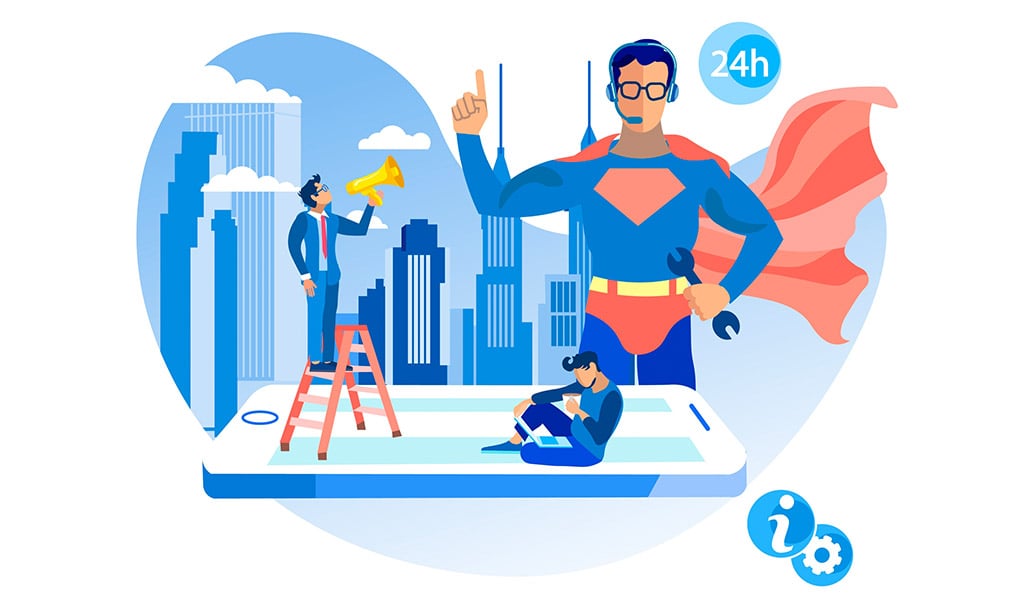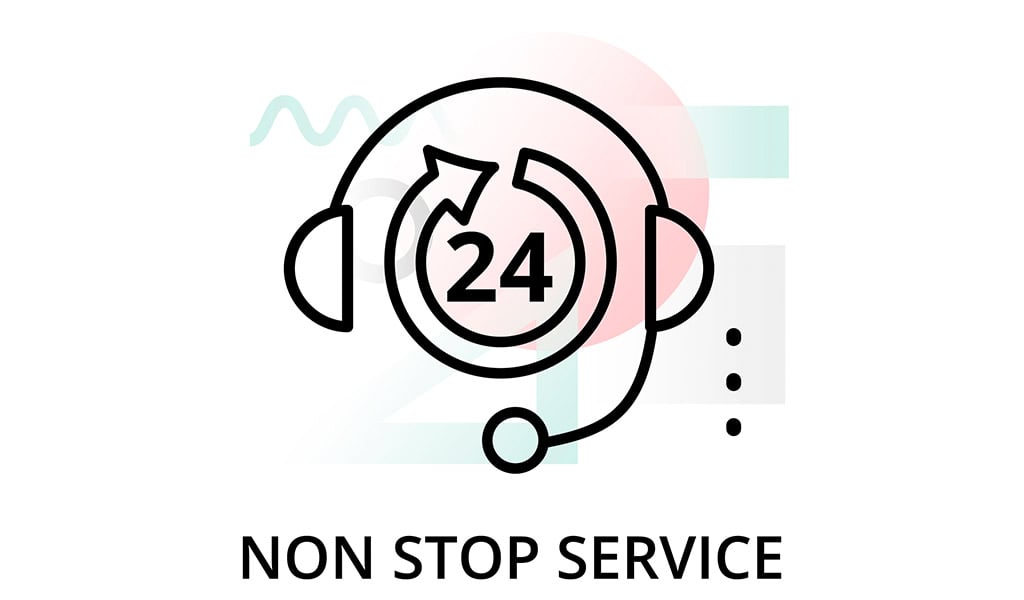
Call centers are a necessary part of the operation for many businesses, but they can be very expensive to run. To run a successful call center that helps elevate the business, there’s a lot you need to get right. You need the right amount of office space. You need computers, headsets, and other hardware. You need a telephony platform and CRM software. And of course, you need to hire call center agents. These are just the ingredients for a call center recipe at a basic level. Hi-tech call centers often have even more components.
Call centers can be expensive, but that doesn’t mean you have to resign yourself to paying high costs. There are many ways that companies can cut down on call center costs and even improve the call center at the same time. It’s possible to have a call center that is cheaper to run, but also more efficient and productive. Let’s take a look at 12 ways you can save costs in your call center.
1. Labor Costs and Resource Planning
Labor is the most expensive element of any call center. How you manage your labor can have a significant impact on call center expenses. One way you can save costs is by having great workforce management (WFM). This uses data, personality profiling, and more to determine which agents should be working and when. It’s a good idea to look at your staffing ratio. Do you have mostly full-time call center agents?
Full-time agents can be costly for the business if your call volumes fluctuate frequently. If you have a high percentage of full-time staff but there are often times when your call center is very quiet, either throughout the day or at certain times in the month, then there are savings to be made. This means that there are agents who are not working to their full potential because there are not enough customers for every agent at any given time. To combat this, you can hire more part-time or flexible agents so you can meet demand when necessary, without having to commit to full-time hours.
2. Using Machine Learning and Metric Scores
Machine learning (ML) is starting to be used in businesses all over the world to improve efficiency and productivity. You can save costs in your call center by removing inefficiency or working smartly to get more from what you already have.
One way to do this is to use machine learning to analyze your metric score and find valuable insights. This will let you know how customer experience relates to your operation and where there is room for improvement. For example, how much does a 5% rise in customer satisfaction affect your revenue? How much does a 1% drop in customer satisfaction lead to a loss in revenue? How much does a simple technical issue cost the company in terms of an increased influx of calls? Can you drill this down further? With machine learning and data analysis, you can determine exactly how much a technical issue with your product or service will impact your costs and this can help inform the technical teams in terms of how many hands need to be working to fix a problem when it occurs.

3. Chatbots and Automated Interactions
Otherwise known as automated interactions. Chatbots allow customers to always get the help they need even when an agent isn’t available. A good chatbot can dramatically decrease the pressure on agents and even lead to cutting back on agents altogether.
With chatbots, you can turn a 9-5 call center into a 24-hour contact center with very little work. Automated interactions can also be used by agents to quickly answer common questions that don’t require the agent to type out the same answer each time. This makes it easier for the agent to handle multiple requests at one time.
4. Forecasting
Utilizing data and trends to determine when you will be busy and preparing for this. There are also many other ways that forecasting can help cut costs. Each time a customer contacts the business through the call center, their interaction is recorded. You know exactly how long each type of problem occurs and how long that issue takes to resolve. You can also see which agents are the best at dealing with certain problems and help divide up the workload based on this. It’s all about working smarter.
5. Workflows
Call centers and contact centers are complex operations with many moving parts. Numerous processes and activities need to be completed at any given time. Some tasks are critical to the smooth running of the call center but are also repetitive. For these tasks, it makes sense to automate workflows so that repetitive tasks can be handled by AI. It’s a poor use of agent time if the agent has to manually copy data between systems or something similar. The same is true for the emails that get sent once a ticket has been resolved. There’s no reason for an agent to be manually sending these emails in 2020.
Not only is it a poor use of agent time, but AI is actually better at these tasks. When humans do repetitive tasks, we start to do it without even thinking. This is because when we form a strong habit, we are actually using a part of the brain that is entirely separate from those associated with memory recall. This can be a great thing when it works well. However, some people are tired or get distracted in the middle of a task, and errors are made. Errors can be extremely costly for a call center. A mistake in an email can cause the customer to call the agent back and be even angrier than the first time they called. Satisfying this customer is now even more difficult and time consuming.
6. Customer Knowledge Bases
Knowledge bases are about anticipating ahead of time the information a customer might want to find and providing it for them. For example, if your call center gets several calls a day from customers asking how to change their delivery address or how to use a specific feature of your product, you can create content around these issues.
Of course, you can’t force customers to read these articles. However, many customers will try to find an answer online before they contact customer service. Generally speaking, customers never want to contact customer service and it is usually the last resort. Talking to an agent takes time out of the customer’s day and they want to avoid this. If they can find a simple and straightforward answer online, then they can solve the problem themselves.
It’s a good idea to compile a list of all of the most common problems that come through your call center and create articles for these problems.
7. Improve Resolution Rates
Open tickets and unresolved issues can cost call centers a lot of money. This is why call centers try to close tickets as fast as possible. This results in satisfied customers and agents, and also ensures that agents are available to tackle new issues. Here are some ways resolution rates can be boosted in call centers:
- Improve agent training – Agents who understand the product, the business, and their role better will be more successful at resolving complaints.
- Improve collaboration tools – Internal chat systems can help agents ask other staff questions quickly when faced with a problem.
- Agent knowledge base – Just as knowledge bases are great for customers, they are also great for agents too. They allow agents to find relevant information quickly and easily.
8. Omnichannel Platform
In call centers, a huge amount of time is wasted by duplicating efforts or switching between multiple systems. With an omnichannel platform, everything can be handled in one place and work seamlessly to give agents everything they need to do their job. Omnichannel platforms for proving to be the way forward for businesses in 2020 as we move away from multi-channel or siloed applications.

9. Reduce Call Handling Time
The more time that agents spend on a call, the more customers there are waiting in the queue. However, any goals around call handling time have to be managed carefully. It’s not a good idea to simply look at the current call handling time and instruct agents to spend less time on calls. This can result in agents rushing customers off the call when they are not ready, and this will reduce the overall quality of the calls.
Instead, you should try and do a deep dive into exactly why call handling time isn’t where you want it to be and find solutions to those specific reasons. For example, you might find that some agents are less experienced in certain areas and will take longer to solve the problem. These agents can be given simpler tickets to solve. You might also find that agents spend too long on the introduction and you can save time here.
10. Advanced Call Routing
Some agents are better equipped at resolving certain problems. With advanced call routing, customers can be routed through to the right agent straight away and this will lead to higher customer satisfaction rates and quicker resolution time. This is another example of how automation and AI can be used in call centers to improve the overall efficiency of the operation.
11. Office Space
Office space can cost a lot of money in rent or maintenance. You have to keep the lights on, the computers running, and ensure every agent has a desk and the appropriate amount of space to complete their work.
In 2020, we have all the tools necessary to allow for more flexible working environments that can help cut down on the amount of office space a company actually needs. For example, when supported by the right tools, agents can work remotely. You could have a system when agents work from home 3 days a week and come into the office 2 days a week. This can limit how many agents are in the office at any one time. You could also have agents that are 100% remote workers. With coronavirus, many businesses have moved to this model already, and scaling it up or continuing it in a post-pandemic world is a real option.
12. Limiting Tech Vendors
If you buy technology for your call center from a range of different vendors, you might be paying more than you need to. You might have different contract lengths for each vendor, or their prices might fluctuate. By limiting the number of vendors, you buy from, you can work more closely with a few good vendors who can cover all of your needs.
The benefit of this system is that you can often strike deals withs vendors to get a discount on certain products. It also eliminates the possibility that you have agents working with different technology as one contract ends, and another begins. You might end up with agents using old laptops or headsets from an old contract, even though these pieces of tech are no longer optimal. This can create frustrations for agents because it’s often the more experienced agents who have been with the company for longer who have the worst tech. This can then contribute to agent turnover.